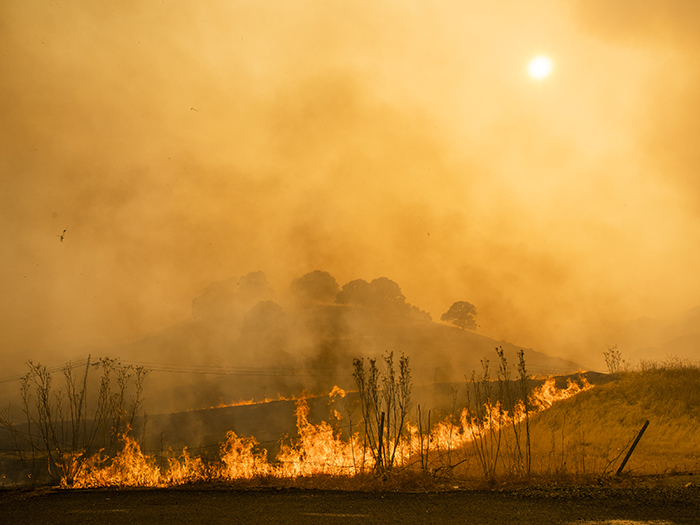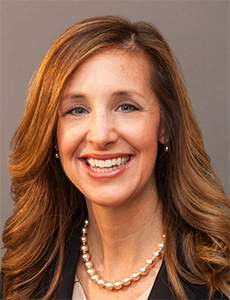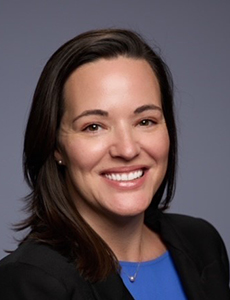Insurers, It’s Time to Do a Better Job of Climate Change Risk Reporting. Here’s How You Can Start

Whether it’s record high temperatures in the Pacific Northwest, wild fires burning in California, or floods swamping parts of Germany, it seems every day brings another headline about disasters wrought by climate change.
To try to anticipate and measure risk, midsize and large insurers are currently required to file climate change exposure disclosures.
But they can better manage and measure climate risks by adopting Task Force on Climate Related Financial Disclosures, better known as TCFD reporting.
That’s the message of a recent webinar “How Insurers are Rising to the Challenge of Climate Risk Disclosure” from Ceres, which urged insurers to replace other forms of climate disclosure with TCFD reporting and covered the benefits and challenges it presents from the perspective of insurers that are already doing TCFD reporting.
“Insurance companies are at significant financial risk, along with their customers, because of climate issues,” said Steven Rothstein, managing director, Ceres Accelerator for Sustainable Capital Markets.
“A company can’t manage a problem if it first can’t measure a problem. TCFD will help them measure it in a better way so that the company, their investors, and regulators have a far better sense of what’s happening and to understand the scope of the risk,” he said.
Addressing Climate Change Concerns and Recommendations
Ceres is a nonprofit organization working with capital market leaders to solve sustainability challenges including climate change.
TCFD is a global effort that seeks to provide consistent, comparable and reliable disclosure of climate-related risks and opportunities.
The Financial Stability Board, which consists of 32 members from across the G20, representing both preparers and users of financial disclosures, established the TCFD in 2015 to develop recommendations for more effective climate-related disclosures.
In 2017, the TCFD published its final recommendations which cover four areas:
- Governance: Requires an organization to disclose its governance around climate-related risks and opportunities.
- Strategy: Requires disclosure of actual and potential impacts of climate-related risk and opportunities on the organization’s businesses, strategy and financial planning.
- Risk management: Requires disclosure of how an organization identifies, assesses and manages climate-related risks.
- Metrics and targets: Requires an organization to disclose the metrics and targets used to assess and manage relevant climate-related risks.
As of September 2018, more than 513 organizations have publicly supported TCFD recommendations, including investors representing over $100 trillion.
An Alternative to Climate Disclosures
Climate disclosures are already widely used in the insurance industry, according to the National Association of Insurance Commissioners, which started doing annual climate surveys in 2009.
For the past seven years, six states (California, Connecticut, Minnesota, New Mexico, New York and Washington) have participated in the survey, which translates to more than 1,000 companies representing 70% of the U.S. insurance market.
Beginning in 2021, nine states/territories (the District of Columbia, Delaware, Maine, Maryland, Massachusetts, Oregon, Pennsylvania, Rhode Island, and Vermont) have joined to bring the total to fifteen participating states, increasing the percentage of the market to approximately 78%.
The threshold for U.S. insurers to report climate risk exposure is $100 million in annual written premium and writing business in any of the participating states.
Rothstein said TCFD can replace other forms of climate risk disclosure.
“This is not in addition to, it is instead of,” he said. “This is a more comprehensive approach. Regulators appreciate it. Insurers will learn more and get more information out of it.”
The NAIC reviewed and analyzed the TCFD reports of 8 companies (AIG, Allianz, Assurant, AXA, QBE, Swiss Re, The Travelers Companies Inc., and Zurich Insurance Group), and scored their TCFD reports based on 59 disclosure expectations.
The analysis showed that TCFD reports are a big step forward, and insurers have opportunities to refine their disclosures, Rothstein said.
It also found that one of the most complex and challenging tasks facing insurers is incorporating climate scenarios into their risk modeling effectively, and that some insurers lacked specificity in outlining their climate scenarios, time horizons and the impacts at the sector or geography level.
Representatives of two companies, Zurich North America and AIG, discussed their experiences of TCFD reporting during the webinar.
Jennifer Waldner Grant, chief sustainability officer at AIG, called TCFD the gold standard of climate disclosure reporting, and added “this is a real commitment of time and resources. We did 30 interviews with experts. A lot of people had to weigh in and look at the report.”
Her company does TCFD reporting in lieu of the NAIC Climate Risk Disclosure Survey.
The TCFD is comprehensive and detailed, and compiling it “allowed us to have real dialogue and consensus on what our positions are,” she said.
AIG was able to draw on reports, news releases and other existing sources for much of the information needed for TCFD.
“It helps to streamline processes and avoid survey fatigue,” she said.
Ben Harper, head of corporate sustainability for Zurich North America, agreed that TCFD is the gold standard for the industry.
“It shapes how we do business going forward,” he said.
He said responding to the TCFD is a challenging, but enlightening process.
“This is really a learning by doing exercise,” he said. “No one can have a perfect disclosure that ticks all the boxes on day one. It will be more difficult and challenging if they delay the exercise.”
He added that completing the TCFD promotes dialogue with investors and regulators, and is valuable as a risk management tool in itself.
Harper found that the TCFD pushes insurers to consider climate change scenarios, which is a challenge.
“That can be overwhelming for someone who hasn’t done it before,” he said.
Another hurdle for both Zurich and AIG is responding without revealing information their companies want to protect.
“It’s been a challenge to provide a meaningful response while protecting intellectual property,” Harper said.
“It’s a natural inclination to protect information we haven’t provided previously,” Grant added.
Rothstein expects TCFD reporting to replace other forms of climate disclosure reporting, and insurers who use TCFD will be better prepared as climate change continues to affect the world.
“We’re seeing more fires than ever before, more floods, hotter temperatures in areas of the country that haven’t seen them before,” he said. “The physical risk of climate change is growing every year. The insurance industry is on the front line. It is critical to do TCFD reporting, both for society, and for their own balance sheet.” &












